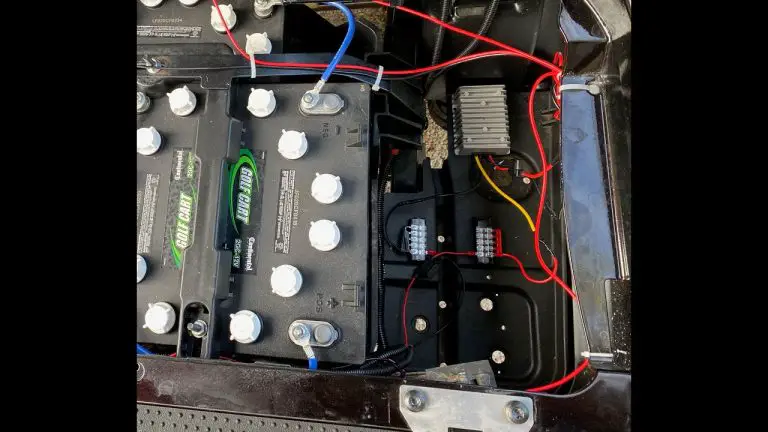Difference Between Chip And Pitch

Golf is a game of precision, and mastering the short game is essential for lowering your scores and improving your overall game. Two essential shots in the short game are chip shots and pitch shots. While these shots may seem similar, there are some key differences that golfers need to understand to improve their short game.
Chip shots are low-trajectory shots that fly for a short distance before rolling out towards the hole. They are typically played with a wedge or a short iron and are used when you need to get the ball in the air for a short distance. Pitch shots, on the other hand, are high-trajectory shots that fly for a longer distance before landing on the green. They are typically played with a higher-lofted club, such as a sand wedge or lob wedge, and are used when you need to get the ball up and over an obstacle or land the ball softly on the green.
In this guide, we’ll explore the difference between chip and pitch shots in more detail, including shot trajectory, club selection, and when to use each shot. We’ll also provide tips and techniques for hitting both shots and offer practice drills to help you improve your short game. By the end of this guide, you’ll have a solid understanding of the difference between chip and pitch shots and be well on your way to improving your short game and lowering your scores. So let’s dive in and learn the difference between chip and pitch shots in golf.

Definition of Chip Shots
Chip shots are low-trajectory shots that fly for a short distance before rolling out towards the hole. They are typically played with a wedge or a short iron, and are used when you need to get the ball in the air for a short distance, but not as much as a pitch shot. Chip shots are great for when you need to hit the ball over a small obstacle, such as a bunker, or when you’re close to the green and need to get the ball rolling towards the hole.
Definition of Pitch Shots
Pitch shots are high-trajectory shots that fly for a longer distance before landing on the green. They are typically played with a higher-lofted club, such as a sand wedge or lob wedge, and are used when you need to get the ball up and over an obstacle, such as a bunker or a tree. Pitch shots are great for when you need to land the ball softly on the green and make it stop quickly.
Differences Between Chip Shots and Pitch Shots
There are several key differences between chip shots and pitch shots that are important to understand. First, chip shots have a lower trajectory than pitch shots, which means they don’t fly as high in the air. Second, chip shots are typically played with a wedge or a short iron, while pitch shots are played with a higher-lofted club, such as a sand wedge or lob wedge. Third, chip shots are used when you need to get the ball rolling towards the hole, while pitch shots are used when you need to get the ball up and over an obstacle.
When it comes to body movement during the shot, chip shots require less movement than pitch shots. With chip shots, you want to use a simple, smooth swing that minimizes movement, while with pitch shots, you want to use a more aggressive swing that generates more speed and height.
Importance of Knowing the Difference
Knowing the difference between chip shots and pitch shots is important for improving your short game and lowering your scores. Understanding which shot to use in different situations can help you make better decisions on the course and avoid costly mistakes. It can also help you save strokes and gain an edge over your opponents.
How to Hit a Chip Shot
To hit a chip shot, start by choosing the right club for the shot. A wedge or a short iron is usually the best choice for a chip shot, depending on the distance to the hole and the lie of the ball. Next, set up with a narrow stance and position the ball in the center of your stance. Take a light grip on the club and keep your hands ahead of the ball at impact. Use a simple, smooth swing and focus on making clean contact with the ball.
How to Hit a Pitch Shot
To hit a pitch shot, start by choosing the right club for the shot. A sand wedge or lob wedge is usually the best choice for a pitch shot, depending on the distance to the hole and the lie of the ball. Next, set up with a wider stance and position the ball towards your front foot. Take a firm grip on the club and use a more aggressive swing than you would with a chip shot. Focus on generating speed and height and make sure to follow through on the shot.
Practice Drills
Like any other aspect of golf, the key to mastering chip and pitch shots is practice. Here are some practice drills you can use to improve your technique:
- Stationary target drills: Place a target on the green and practice hitting chip and pitch shots to that target. Vary the distance and club selection to improve your accuracy and distance control.
- Moving target drills: Set up a course with multiple targets and practice hitting chip and pitch shots to each target as you move around the course. This will help you improve your shot selection and decision-making skills.
- Distance control drills: Set up a course with multiple targets at different distances and practice hitting chip and pitch shots to each target, focusing on controlling the distance and trajectory of the ball.
Course Management
Course management is an important aspect of golf, and it applies to chip and pitch shots as well. When you’re deciding which shot to use, consider the lie of the ball, the distance to the hole, and any obstacles in your way. If there’s a bunker or water hazard in front of the green, a chip shot may be the best choice. If the green is sloping away from you, a pitch shot may be the better option.
Conclusion
In conclusion, understanding the difference between chip and pitch shots is crucial for improving your short game and lowering your scores. By knowing when to use each shot, choosing the right club, practicing drills, and managing the course, you can become a skilled chipper and pitcher and take your game to the next level. So get out there and practice – your short game will thank you!





